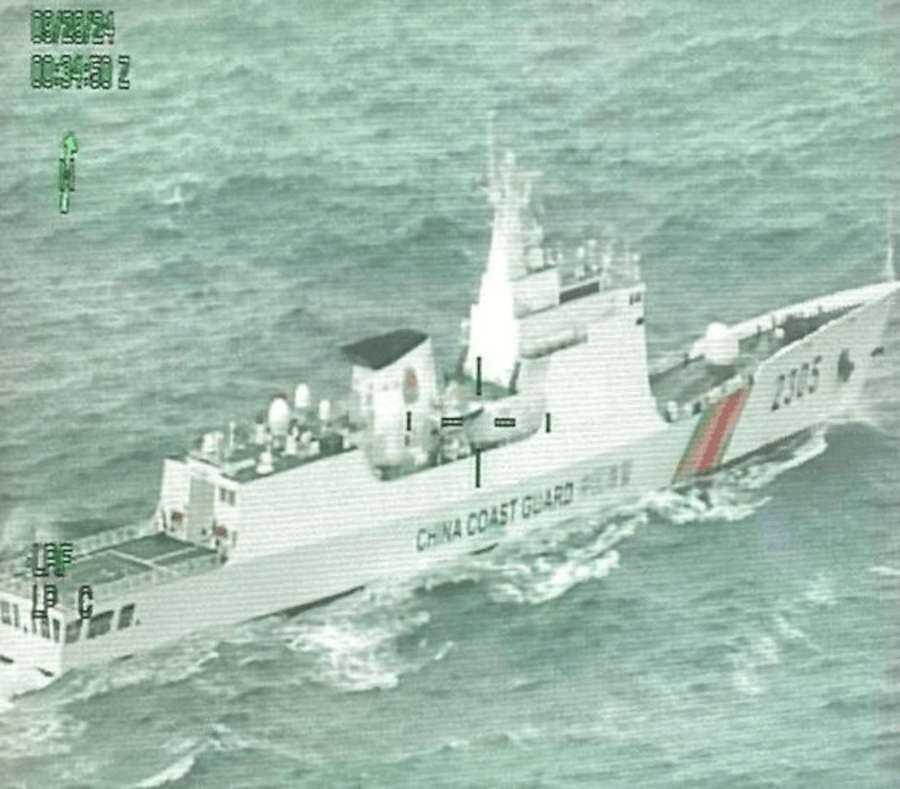The Intelligence Studies Essay: Nichols on Leadership Decapitation vs Mid-Tier Degradation
This Intelligence Studies Essay assesses open source research to determine the relative effectiveness of two alternative strategies for directing lethal attacks against terrorist groups: leadership decapitation, or degradation of mid-level management.
Published by The Lawfare Institute
in Cooperation With

This Intelligence Studies Essay assesses open source research to determine the relative effectiveness of two alternative strategies for directing lethal attacks against terrorist groups: leadership decapitation, or degradation of mid-level management. While the strategy for directing, in particular, drone strikes against terror targets by the CIA and DOD has never been fully declared, it appears to include elements of both strategies based on legal and practical considerations in specific cases, and is limited by the availability of intelligence on the inner workings of enemies like al Qaida, Da’esh, and al-Shabab. The limited number of attack platforms and scarce intelligence-gathering resources places a premium on optimizing the impact of each strike by following a strategy tailored to the organization being targeted.
The author, Phil Nichols, completed the research as an undergraduate and was recognized by UT-Austin’s Intelligence Studies Project as a semi-finalist for the 2015 “Bobby R. Inman Award” for student scholarship in intelligence. The full paper, with supporting data sets, is available here.
***
Measuring the Effectiveness of Counterterrorism Strategies: Leadership Decapitation vs Mid-Tier Degradation
Philip Nichols
As the war in Syria has recently been exacerbated by the growth of the violent non-state actor Da’esh, the US grapples with how to optimize drone strikes to degrade the group. The current strategy includes neutralizing individuals who serve important roles in the terror group’s organization, regardless of their citizenship. Even our traditionally less aggressive ally the UK has embraced this concept through the targeted killing of Reyaad Khan on August 21, 2015. The US had already crossed that threshold with the killing of Anwar Al-Awlaki in 2011. As we institutionalize a strategy of targeting specific individuals within a terror group, the question becomes how to maximize the effectiveness of resource-intensive lethal strikes. The purpose of this research is to examine whether it is more effective to target the traditional leadership figures or mid-tier personnel to achieve the goals of a counter-terrorism program. This article describes the positive and negative aspects of each strategy, previous research on this topic, and finally, the conclusions of the research with additional policy implications. The research was completed in the summer and fall of 2014, but I believe the policy implications are still valid.
Overview of Alternative Strategies
Traditionally, many have viewed “cutting the head off the snake”, or neutralizing a group’s leader as the best way to degrade that organization’s capabilities. Once a leader was eliminated, it was expected that the organization would crumble without the guiding support of its fallen leader. Daniel Byman noted in Do Targeted Killings Work? that HAMAS attacks on Israel dropped off in 2005 “partly because Israel's targeted killings have shattered Palestinian terrorist groups and made it difficult for them to conduct effective operations.” Notwithstanding Byman’s perspective, a possible alternative or supplemental strategy would entail targeting the mid-tier managers of a terror organization. This strategy would prove effective if the network could not cope with the continuous loss of its specialized mid-level personnel, which would slowly degrade its operational capabilities. The approach holds that a mid-tier degradation campaign will eliminate the capacity of a violent non-state actor to continue operations and, at best, force the leader to seek a negotiated end to the conflict or, at worst, considerably shrink the pool of potential replacement leaders. Both strategies present advantages and disadvantages.
Leadership Decapitation
The idea that eliminating the leader of an organization degrades the organization’s operational capabilities and may even threaten its existence, presumes strong leadership qualities including charisma and an intricate understanding of the organization. Charisma is recognized as a key quality in the leader of violent non-state group. In order to be successful as a covert violent organization, a leader must present an aura that attracts new followers and reinforces the loyalty of existing members. Without the structure found in a legal organization, a terrorist leader must build their legitimacy within the organization through charisma that generates strong social bonds. This aura can become so strong that, even without complete operational control, the leader’s survival can serve as a beacon for the organization. The removal of such a leader can be quite effective in reducing the momentum and drive of the violent group to continue operations.
Another key quality of a traditional terrorist leader is the ability to maintain practical command and control over the organization. Command and control can be thought of as effectively distributing resources to important nodes in the organization, or fundraising for the group’s activities. Understanding the structure of an organization is an important prerequisite to effective leadership. Without such understanding, the leader will be unable to effectively control the organization’s functions. Few leaders offer charisma and the deep knowledge of a group’s structure, personnel, and relationships. Removing such a unique figure can prove devastating to the group.
Leadership decapitation can have similar impacts on hierarchical and network-based groups. A network-based violent non-state group relies on bottom-up recruitment strategies, in which volunteers come forward to commit acts of terror due to the organization’s appeal. This draw again owes primarily to the leader’s charisma, as seen in the late stages of al Qaeda, which relied on Osama bin Ladin’s “legendary and mythical source of inspiration” to encourage bottom-up recruitment, as described in Mitch Silber’s The Al Qaeda Factor: Plots Against the West. Similarly, a violent non-state group that relies on network-based structures must have a leader who has a strong and comprehensive understanding of the operations of the organization. Using the late stages of al Qaeda as a model, Michael Kenney, author of From Pablo to Osama, wrote that “the emir knows everything there is to know about the operation involved…People in the logistics cell would not necessarily know who was involved in the surveillance cell”. The leader knows all the participants involved in the operation, while personnel in compartmentalized nodes in the network would not be able to identify the other nodes. This structure again requires a strong understanding of the organization by the leader in order to operate effectively notwithstanding such compartmentalization.
While a leadership decapitation strategy certainly may be effective, there are drawbacks. These may involve the volatility of the leader’s replacement, the replacement’s lack of legitimacy, or “blowback effect”. The impacts of the volatility and illegitimacy of the replacement leader are difficult to anticipate, while the “blowback effect” would make this strategy less attractive to counter-terrorism officials.
First, by eliminating the leader of an insurgency, one also runs the risk of creating a vacuum for a more aggressive leader to take control of the movement and increase its pace of operations. As David Kilcullen explained in Counterinsurgency, a more experienced leader, who has seen the loss of life first hand, might have been discriminate in the selection of operations, while a younger, more bloodthirsty leader from the front lines might order violent attacks more frequently.
Kilcullen also noted another potential problem with removing a senior leader. The fallen leader may have been more willing, better positioned, or had more legitimacy within the organization to negotiate a peaceful end to the conflict than a younger, more aggressive leader. A new leader may not have consolidated complete control over the organization therefore making it nearly impossible to commit the entire organization to a negotiated settlement.
Finally, the targeted killing of a leader may have an unintended “blowback effect”, as described by Boaz Ganor in The Counter-Terrorism Puzzle: A Guide for Decision Makers. The “blowback effect” suggests that the rest of the organization is more likely to increase the number of attacks in order to prove that it is still functioning without its leader. This intense push of violence may lead to chaos within the organization itself, as isolated cells begin to act without central direction.
Mid-Tier Degradation/Elimination
The advantages of a mid-tier elimination campaign lie in its potential to degrade the day-to-day operational capabilities of terror groups because of the unique importance and expertise mid-tier managers bring to operations. Mid-level managers are essential in transforming the strategic goals of their leader and organization into daily operations. They act as nodes in the larger network of the organization, distributing and gathering resources and intelligence in order to successfully execute operations. While foot soldiers are easy to replace, mid-tier managers play unique, specialized roles in the organization. Persistent attacks aimed at these non-redundant nodes can prove fatal to the terror group, as described in Marc Sageman’s Understanding Terror Networks:
Arresting these individuals would degrade these networks into isolated units, singletons or cliques, who would consequently be incapable of mounting complex large-scale operations owing to the lack of expertise and logistical and financial support. Small-scale operations would be very hard to eradicate completely, but without spectacular successes to sustain their motivation for terrorism, isolated operators will lose their enthusiasm.
Without the ability to gain attention through daily operations, the violent non-state actor may fail to attract new recruits, and is more than likely to dissolve under escalating pressure. Failing to execute operations due to the loss of mid-level managers, a violent non-state group may regress under the pressure of government counter-terrorism programs. The sustained removal of mid-tier managers also reduces the pool from which a competent replacement leader can be chosen, and thus limits the chances of successfully transitioning to the next generation of the organization.
Research and Policy Implications
Three models were used to evaluate the data collected, including an overall model examining the mid-tier elimination and leadership decapitation strategies together, and two models examining the strategies independently. In order to better understand the data, some summary statistics of the violent non-state actors identified for this research should be outlined. There were 45 different violent non-state actors evaluated by motivation, leadership style, group size, and geographic area of operation. 19 groups were ethnically motivated, 18 were religiously motivated, and 8 were politically motivated. Regarding leadership style, 29 violent non-state actors employed a “top commander” style of leadership, 14 utilized a “council” style of leadership, and two employed a “politburo” style of leadership. Concerning group size, 15 of the terror groups had fewer than 1,500 active members, 22 had more than 3,500 active members, and 8 had between 1,500 and 3,500 members. On geographic area of operation, 9 groups operated in Central Asia, 7 in Southeast Asia, 9 in the Middle East (including the Caucasus), 4 in East Africa, 3 operated in West Africa, 10 in Central Africa, and 3 in South America. Overall, there were 43 instances in which the top leader was neutralized, and 122 instances when mid-level managers of an organization were eliminated.
Earlier research had examined the effects of leadership decapitation strategies either by case study, or during earlier periods in history, but this is the first study to evaluate the effects of these counterterrorism strategies in the 2000-2010 timeframe and across multiple groups in multiple theatres.
Overall, the models demonstrated that both counterterrorism strategies generated a temporary increase in attacks by the violent non-state group immediately after important figures were eliminated. However, the strategy of targeting mid-level managers was more effective in reducing the lethality of such attacks. This data disproves the “null” hypothesis that the counterterrorism strategies of leadership decapitation and mid-tier elimination were equally effective, and in turn suggest that a mid-tier elimination strategy may be more effective in meeting current counterterrorism challenges.
The statistical analysis further suggests three major policy-relevant conclusions. First, a leadership decapitation strategy should be pursued to mitigate the operational capabilities of political or ethnically driven violent non-state groups. Second, mid-tier elimination strategies are more effective in degrading the operational capabilities of terror groups that have more than 3,500 active members, and particularly when they are organized in a “politburo” style of leadership. Third, and finally, when the characteristics of the violent non-state group do not match the aforementioned criteria, continuous application of lethal pressure on mid-level managers should be pursued because it is more effective in reducing the short-term operational capabilities of most violent groups.
A constraint of this study is that the timeframe was limited to ten years. As time passes and more data are collected, further research should be undertaken to confirm these tentative findings. The possible risk of collinearity was mitigated through the omission of certain variables in running the multivariate analysis as well as by setting up two distinct models to analyze the interaction variables. In addition, this study utilized only open-source databases, which can provide only a very abstract estimate of the data. Others with access to classified or other proprietary data sources should also attempt to replicate these results.





.jpg?sfvrsn=118b03e5_5)
